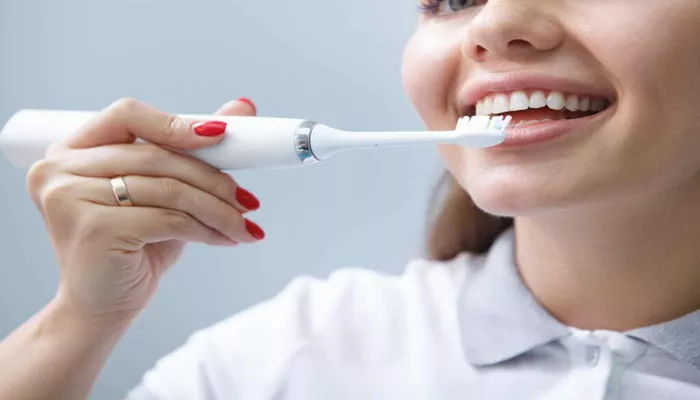Receding gums, also known as gum recession, is a common dental condition where the gum tissue pulls back or wears away, exposing more of the tooth or its root. This can lead to sensitivity, increased risk of decay, and an unattractive smile. Many people wonder if using an electric toothbrush can help or worsen this condition.
What Causes Receding Gums?
Several factors can cause gums to recede, including:
Gum disease: Infections such as periodontitis damage the gum tissue and supporting bone.
Aggressive brushing: Using a hard-bristled toothbrush or brushing too hard can wear down gums.
Poor oral hygiene: Plaque buildup can lead to inflammation and gum damage.
Genetics: Some people are more prone to gum recession.
Hormonal changes: Pregnancy or menopause can make gums more sensitive.
Tobacco use: Smoking increases risk of gum disease and recession.
Teeth grinding or misalignment: Excess pressure can harm gums.
Why Is Gum Recession a Concern?
When gums recede, the roots of your teeth become exposed. These roots are softer than enamel and more prone to decay, leading to cavities and even tooth loss. Gum recession also increases tooth sensitivity and may require costly dental treatments, such as gum grafts or tooth extractions. Tooth extractions cost can vary depending on severity and location, often influenced by the extent of gum disease.
Electric Toothbrushes: What Are They?
Electric toothbrushes are powered devices that use rapid bristle movements to clean teeth more efficiently than manual brushing. They often include timers, pressure sensors, and multiple cleaning modes to optimize oral hygiene.
Types of Electric Toothbrushes
Oscillating-rotating brushes: Bristles move in circular motions to remove plaque.
Sonic toothbrushes: Use high-frequency vibrations to clean teeth.
Ultrasonic brushes: Emit ultrasonic waves to break up plaque at a microscopic level.
Benefits of Electric Toothbrushes
- Remove more plaque than manual brushes.
- Include pressure sensors to prevent aggressive brushing.
- Timers ensure brushing for recommended two minutes.
- Ease of use for people with limited dexterity.
Can You Use an Electric Toothbrush with Receding Gums?
Yes, but with some important considerations to protect sensitive and vulnerable gums.
Why Electric Toothbrushes Can Help
Electric toothbrushes, especially those with pressure sensors, can prevent you from brushing too hard. Aggressive brushing is one major cause of gum recession. The superior plaque removal of electric toothbrushes also helps control gum disease, a leading cause of gum recession.
Risks of Using Electric Toothbrushes Improperly
If you use too much pressure or select a high-speed setting that is too harsh, electric toothbrushes can irritate already sensitive gums, worsening recession. Hard bristles or rough brushing motions can cause more damage rather than healing.
Choosing the Right Electric Toothbrush
Select a toothbrush with soft bristles designed for sensitive gums.
Use models with pressure sensors that alert you when brushing too hard.
Choose a gentle or sensitive mode rather than high-speed aggressive modes.
Replace brush heads regularly to avoid bacteria buildup.
Proper Technique Matters Most
Even with an electric toothbrush, you should use gentle, circular motions and avoid pressing the brush hard against your teeth and gums. Let the toothbrush do the work.
Other Essential Tips for Managing Receding Gums
Maintain Excellent Oral Hygiene
Brush twice daily, floss regularly, and use an antimicrobial mouthwash if recommended by your dentist. Removing plaque prevents gum disease progression.
Regular Dental Checkups
Routine visits allow your dentist to monitor gum health and intervene early if gum disease or recession worsens. Early treatment may prevent expensive procedures.
Professional Treatments
If gum recession is advanced, treatments like scaling and root planing (deep cleaning), gum graft surgery, or other periodontal therapies may be necessary. These can reduce sensitivity and protect tooth roots.
Addressing Underlying Causes
- Quit smoking to improve gum health
- Manage teeth grinding with night guards
- Correct dental misalignments if recommended
When Is Tooth Extraction Necessary?
In severe cases of gum disease or gum recession, teeth may become loose and require extraction. Tooth extractions can be costly and involve healing time and follow-up treatments such as implants or bridges. For detailed information on tooth extractions cost, visiting trusted dental resources can help you prepare financially and understand the procedure.
Conclusion
Using an electric toothbrush can be beneficial for people with receding gums if used correctly. Choose a soft-bristled model with pressure sensors, use gentle brushing techniques, and maintain good oral hygiene. Avoid aggressive brushing habits and consult your dentist for personalized advice and treatment options. Proper care can slow gum recession, reduce sensitivity, and avoid costly dental problems like tooth extractions caused by advanced gum disease.

